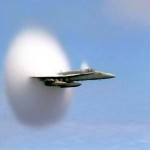 Sound can change according to the speed at which it travels. Another word for sound speed is pitch. When the sound speed slows, the pitch lowers. With clarinet reeds, it’s high. Guitar strings can do both, as they are adjustable. If you look carefully, you can actually see the low pitch strings vibrate back and forth, but the high pitch strings move so quickly it’s hard to see. But you can detect the effects of both with your ears.
Sound can change according to the speed at which it travels. Another word for sound speed is pitch. When the sound speed slows, the pitch lowers. With clarinet reeds, it’s high. Guitar strings can do both, as they are adjustable. If you look carefully, you can actually see the low pitch strings vibrate back and forth, but the high pitch strings move so quickly it’s hard to see. But you can detect the effects of both with your ears.
[am4show have=’p8;p9;p16;p43;p64;p100;’ guest_error=’Guest error message’ user_error=’User error message’ ]
The range of your ears is about 20 – 20,000 Hz (cycles per second). Bats and dogs can hear a lot higher than we can. The image (right) is a real picture of an aircraft as it breaks the sound barrier – meaning that the aircraft is passing the speed that sounds travels at (about 700 mph). The white cloud you see in the photo is related to the shock waves that are forming around the craft as it moves into supersonic speeds. You can think of a shock wave as big pressure front, which creates clouds. In this photo, the pressure from the shock waves is condensing the water vapor in the air.
There are lots of things on earth that break the sound barrier – bullets and bullwhips, for example. The loud crack from a whip is the tip zipping faster than the speed of sound.
 So why do we hear a boom at all? Sonic booms are created by air pressure (think of how the water collects at the bow of a boat as it travels through the water). The vehicle pushes air molecules aside in such a way they are compressed to the point where shock waves are formed. These shock waves form two cones, at the nose and tail of the plane. The shock waves move outward and rearward in all directions and usually extend to the ground.
So why do we hear a boom at all? Sonic booms are created by air pressure (think of how the water collects at the bow of a boat as it travels through the water). The vehicle pushes air molecules aside in such a way they are compressed to the point where shock waves are formed. These shock waves form two cones, at the nose and tail of the plane. The shock waves move outward and rearward in all directions and usually extend to the ground.
As the shock cones spread across the landscape along the flightpath, they create a continuous sonic boom. The sharp release of pressure, after the buildup by the shock wave, is heard as the sonic boom.
How to Make an Air Horn
Let’s learn how to make loud sonic waves… by making an air horn. Your air horn is a loud example of how sound waves travel through the air. To make an air horn, poke a hole large enough to insert a straw into the bottom end of a black Kodak film canister. (We used the pointy tip of a wooden skewer, but a drill can work also.) Before you insert the straw, poke a second hole in the side of the canister, about halfway up the side.
Here’s what you need:
- 7-9″ balloon
- straw
- film canister
- drill and drill bits
Grab an un-inflated balloon and place it on your table. See how there are two layers of rubber (the top surface and the bottom surface)? Cut the neck off a balloon and slice it along one of the folded edges (still un-inflated!) so that it now lays in a flat, rubber sheet on your table.
Drape the balloon sheet over the open end of the film canister and snap the lid on top, making sure there’s a good seal (meaning that the balloon is stretched over the entire opening – no gaps). Insert the straw through the bottom end, and blow through the middle hole (in the side of the canister).
You’ll need to play with this a bit to get it right, but it’s worth it! The straw needs to *just* touch the balloon surface inside the canister and at the right angle, so take a deep breath and gently wiggle the straw around until you get a BIG sound. If you’re good enough, you should be able to get two or three harmonics!
Download Student Worksheet & Exercises
Troubleshooting: Instead of a rubber band vibrating to make sound, a rubber sheet (in the form of a cut-up balloon) vibrates, and the vibration (sound) shoots out the straw. This is one of the pickiest experiments – meaning that it will take practice for your child to make a sound using this device. The straw needs to barely touch the inside surface of the balloon at just the right angle in order for the balloon to vibrate. Make sure you’re blowing through the hole in the side, not through the straw (although you will be able to make sounds out of both attempts).
Here’s a quick video where you can hear the small sonic boom from a bull whip:
Since most of us don’t have bull whips, might I recommend a twisted wet towel? Just be sure to practice on a fence post, NOT a person!
Exercises
- Why do we use a straw with this experiment?
- Does the length of the straw matter? What will affect the pitch of this instrument?
[/am4show]


wow
i’ve just gave up on the m&ms container i’m using. i was making a hole in the bottom and punched out the entire indented part. my mom told me to use paper on the straw to widen it but it won’t work. bit of advise: if you’re using a m&ms container, use a drillbit!
We found little plastic gum containers next to the register Wal-Mart. SugarFree Mentos Gum. It’s a little red container about 3.5″ tall. Open and cut the hinge to remove the lid. It’s not a cylindrical shape, but it worked well. We’re going to be using these for all our “film cannister” needs.
I know they are hard to find… I am so sorry!! I’ve had good luck with small containers, like the kind pills come in (but make sure there’s no medicine in it when you give it to your kids to use, and it’s washed out and very clean). Also some candies like mini M&Ms and minds come in containers similar to film canisters. Look in your cabinets for something that is about the same size and shape!
what can you use instead of a film container since those are very difficult to find
We used the same materials, but got three very different sounding horns. My daughter (the flute player) has a VERY high pitch, while I (a string bass player) have the lowest. That was a fun happenstance, but we were wondering if the relative tightness of the balloon makes a difference in the pitch. By the way, thanks for my headache! 😉
You’ve got the right idea! Longer tubes make lower sounds, short make a higher pitch. Wider make lower pitch, and thinner make higher pitch.
I think it gets higher because my brother plays the organ, and the smaller pipes make a higher pitched sound. The pipe (or straw) is vibrating at a faster frequency
Good question! What are YOUR thoughts as to why this is? And by louder, do you mean volume or pitch?
If it’s pitch, think about the difference between a flute and a piccolo. If it’s volume, how could you be sure you’re blowing the same amount each time with a different size straw?
on the air horn experiment, i tried cutting the straw a little shorter each time. The sound seemed to be louder after i did this. Do you know why???
Since the balloon experiment didn’t work, I did the “Parent -Annoyer” experiment. It worked wonder! Thanks! 🙂
Thanks! I’ll try that. 🙂
This can happen if you have a sharp edge on the hexnut, or are inflating the balloon too much. Try again and see what happens!
Whenever I am about to get the hum, my balloon blows up.:( Am I matching my balloons frequency, or is something simpler going on? Thanks!
Sounds good – did it work?
Since we didn’t have any balloon’s in the house, we substituted a latex glove
Which part are you having trouble with?
I can not get it right !